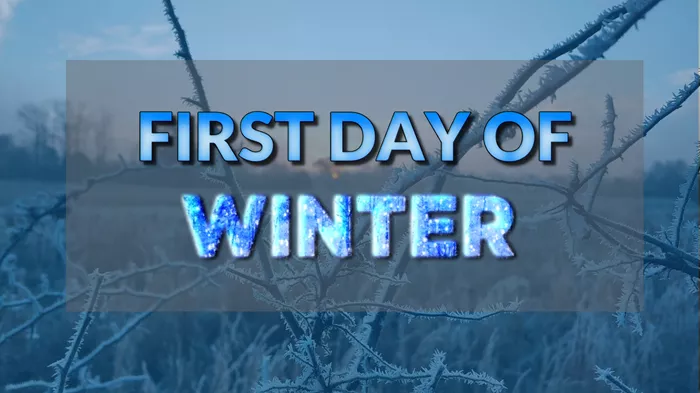Understanding the commencement of winter, a pivotal season in various cultures and climates worldwide, requires a nuanced exploration encompassing historical, astronomical, and meteorological perspectives. This comprehensive article delves into the intricate factors that define when winter officially begins, examining ancient traditions, astronomical alignments, climatological data, and cultural practices across different regions of the world. By unraveling these layers of interpretation and measurement, we aim to provide a thorough understanding of how the first day of winter is determined and its significance in human societies.
Ancient Perspectives and Cultural Traditions
Solar and Lunar Calendars
Ancient civilizations often relied on astronomical observations to mark the seasons. The transition to winter was crucial for agricultural planning, animal husbandry, and cultural festivities. Many early societies developed calendars based on the movements of celestial bodies, aligning seasonal changes with agricultural cycles.
Winter Solstice
The winter solstice, occurring around December 21 or 22 in the Northern Hemisphere, marks the shortest day and longest night of the year. This astronomical event has profound cultural and religious significance in many traditions worldwide. Celebrations surrounding the winter solstice often emphasize themes of renewal, light overcoming darkness, and the turning point towards longer days.
Cross-Quarter Days
Some cultural traditions recognize the midpoint between the solstices and equinoxes as the start of winter. For instance, in Gaelic tradition, Samhain (October 31) marks the beginning of winter, reflecting ancient agricultural and pastoral practices in Ireland and Scotland.
Astronomical Definitions
Winter Solstice
In astronomical terms, winter in the Northern Hemisphere officially begins at the moment of the winter solstice. This astronomical event occurs when the Sun reaches its southernmost point in the sky, directly over the Tropic of Capricorn. For observers in the Northern Hemisphere, this marks the onset of winter, characterized by shorter days and colder temperatures.
Meteorological Winter
Meteorologists define winter based on temperature patterns rather than astronomical events. Meteorological winter in the Northern Hemisphere typically spans from December 1 to February 28 (or 29 in leap years). This period aligns with the coldest months based on historical climate data, facilitating consistency in weather monitoring and forecasting.
Regional and Climatic Variations
Northern Hemisphere
In the Northern Hemisphere, winter begins in late December around the winter solstice. However, the exact onset and severity of winter vary significantly across different latitudes and geographical regions. Arctic and subarctic climates experience prolonged periods of extreme cold and darkness, while temperate regions may have milder winters with varying snowfall and precipitation patterns.
Southern Hemisphere
Conversely, in the Southern Hemisphere, winter officially begins around June 21 or 22, coinciding with the winter solstice. Countries in the Southern Hemisphere experience winter during these months, characterized by cooler temperatures and shorter daylight hours.
Cultural and Religious Observances
Winter Festivals
Throughout history, cultures worldwide have developed unique winter festivals and celebrations to mark the onset of winter. These festivities often incorporate elements of folklore, mythology, and religious rituals. Examples include Christmas, Hanukkah, Yule, and various cultural festivals that celebrate light, warmth, and community during the darkest time of the year.
Seasonal Traditions
Traditional practices associated with winter often emphasize survival, community cohesion, and spiritual reflection. Activities such as winter sports, holiday gatherings, and seasonal foods are integral to maintaining cultural identity and social bonds during this time.
See also: What The Day Of The Month You Were Born Says About You?
Environmental and Ecological Impact
Seasonal Changes
Winter exerts significant influence on ecosystems, affecting plant growth, animal behavior, and environmental conditions. Cold-adapted species undergo physiological changes to survive harsh winter conditions, while migratory animals may travel to warmer regions in search of food and shelter.
Climate Change
Climate change poses challenges to traditional definitions of winter, influencing temperature patterns, precipitation levels, and seasonal variability. Shifts in climate may alter the onset and duration of winter, impacting agricultural productivity, natural habitats, and human livelihoods.
Modern Observations and Scientific Research
Climate Data Analysis
Advancements in meteorology and climate science enable researchers to analyze long-term climate data and trends associated with winter. Studies on temperature anomalies, snow cover extent, and atmospheric circulation patterns provide insights into the dynamics of winter climate variability.
Impact of Global Warming
The effects of global warming on winter are a subject of ongoing research. Rising global temperatures may lead to milder winters, reduced snowfall in certain regions, and shifts in seasonal behavior among plants and animals. Understanding these changes is crucial for adapting to climate variability and mitigating environmental impacts.
Conclusion
The determination of the first day of winter involves a complex interplay of astronomical events, cultural traditions, climatological data, and environmental factors. From ancient solar calendars to modern meteorological definitions, the concept of winter has evolved across civilizations while retaining its fundamental significance in human societies. As we navigate the complexities of seasonal transitions in a changing climate, the study of winter provides valuable insights into the dynamic relationship between nature and culture. By examining the historical roots and scientific principles underlying winter’s onset, we gain a deeper appreciation for the ways in which societies around the world interpret and adapt to seasonal changes.

